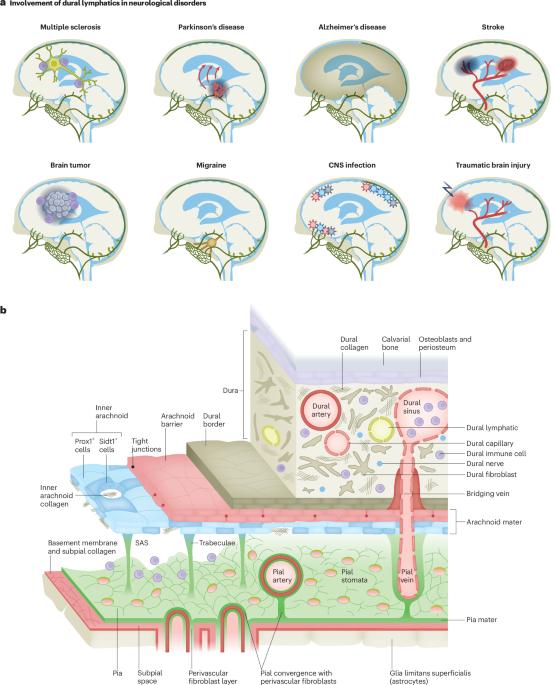Cerebrospinal fluid draining lymphatics in health and disease: advances and controversies
IF 10.8
Q1 CARDIAC & CARDIOVASCULAR SYSTEMS
引用次数: 0
Abstract
The meninges, consisting of the dura, arachnoid and pia mater that surround the brain and spinal cord, have been recognized from the earliest anatomical studies. First identified in 1787, lymphatic vessels in the dura are now receiving greater attention as their contribution to cerebrospinal fluid (CSF) clearance in diverse neurological conditions is being investigated. New methods have increased the understanding of dural lymphatics, but much is still being learned about their heterogeneity, intracranial and extracranial connections, and factors that govern their functions and maintenance. Current research is striving to understand the regulation of CSF drainage and influence of brain antigen and immune cell transit through dural lymphatics on aging impairments and the severity of neurodegenerative and neuroimmune diseases, traumatic brain injury, stroke and other neurological disorders. Achieving these goals should lead to safe and effective methods for manipulating CSF clearance through dural lymphatics for therapeutic benefit. McDonald et al. review studies of lymphatic vessels in the dural layer of the meninges and discuss the role of lymphatics in the function and maintenance of the central nervous system, aging, neuroimmunity and the progression of neurological disorders such as Alzheimer’s disease and Parkinson’s disease.

脑脊液引流淋巴在健康与疾病中的应用:进展与争议。
由硬脑膜、蛛网膜和硬脑膜组成的脑膜环绕着大脑和脊髓,从最早的解剖学研究中就被发现了。硬脑膜中的淋巴管于1787年首次被发现,现在受到了更多的关注,因为它们在各种神经系统疾病中对脑脊液(CSF)清除的作用正在研究中。新方法增加了对硬脑膜淋巴管的了解,但关于它们的异质性、颅内和颅外连接以及控制其功能和维持的因素仍有很多需要了解。目前的研究正在努力了解脑脊液引流的调节以及脑膜淋巴管中脑抗原和免疫细胞转运对衰老损伤以及神经退行性和神经免疫疾病、创伤性脑损伤、中风和其他神经系统疾病的严重程度的影响。实现这些目标应该导致安全有效的方法来操纵脑脊液清除通过硬脑膜淋巴治疗获益。
本文章由计算机程序翻译,如有差异,请以英文原文为准。
求助全文
约1分钟内获得全文
求助全文

 求助内容:
求助内容: 应助结果提醒方式:
应助结果提醒方式:


